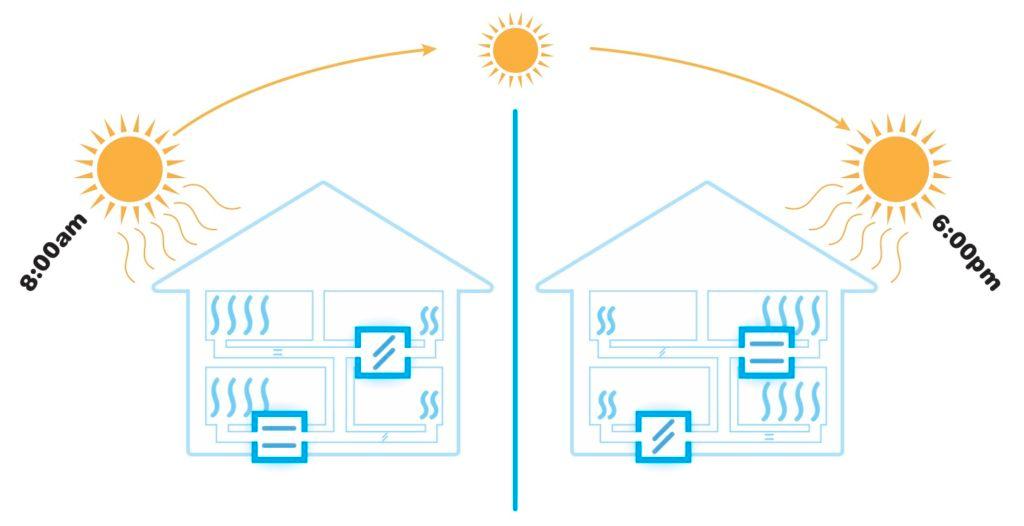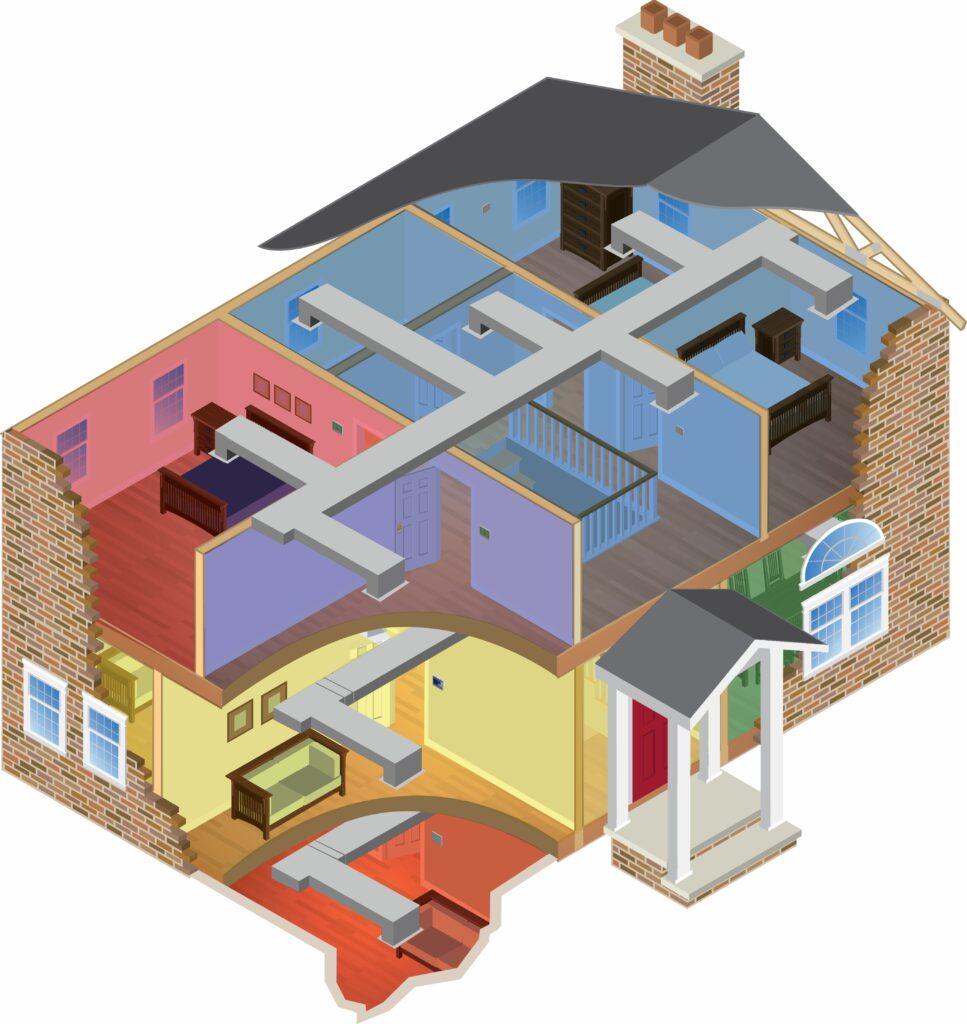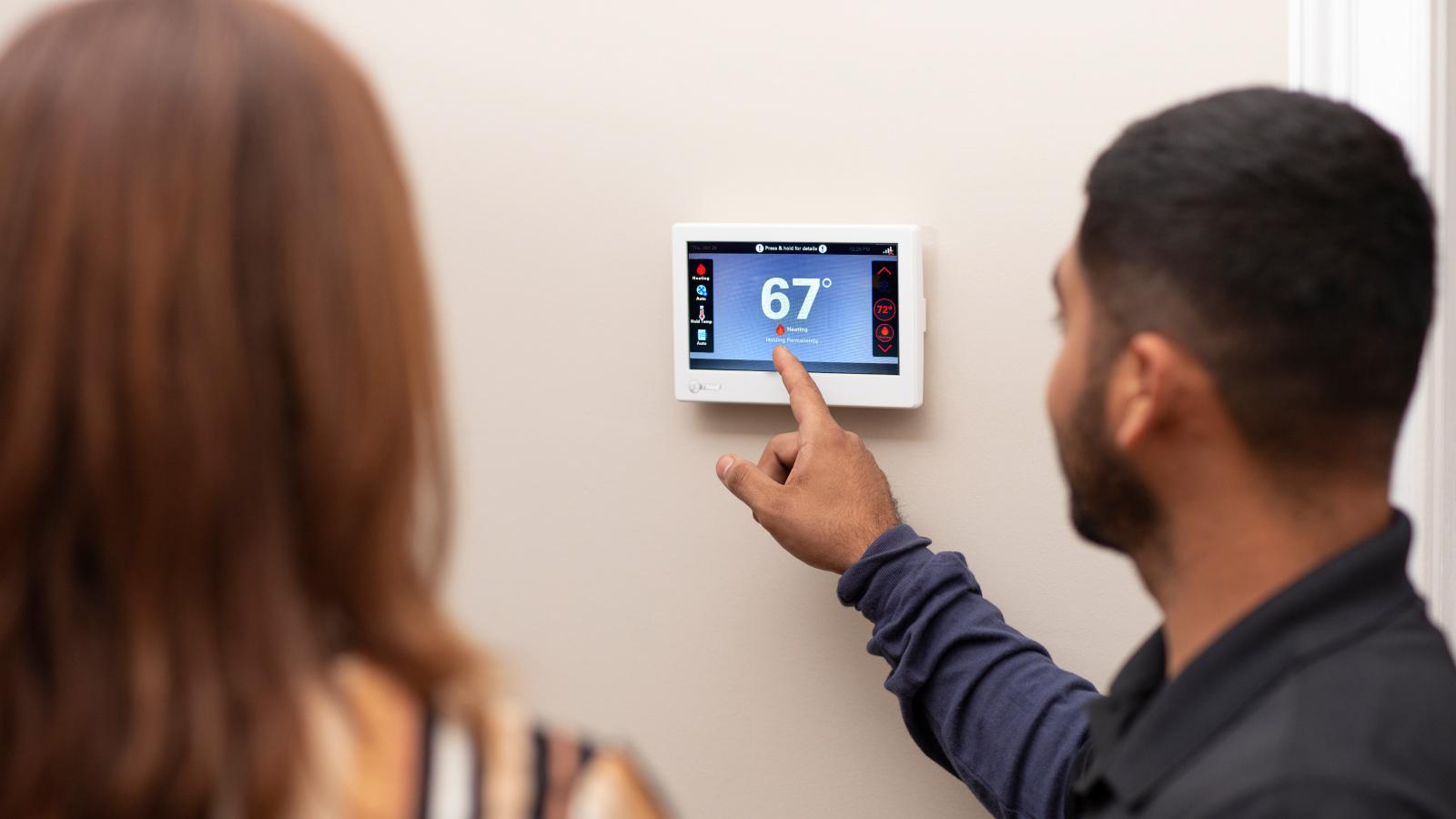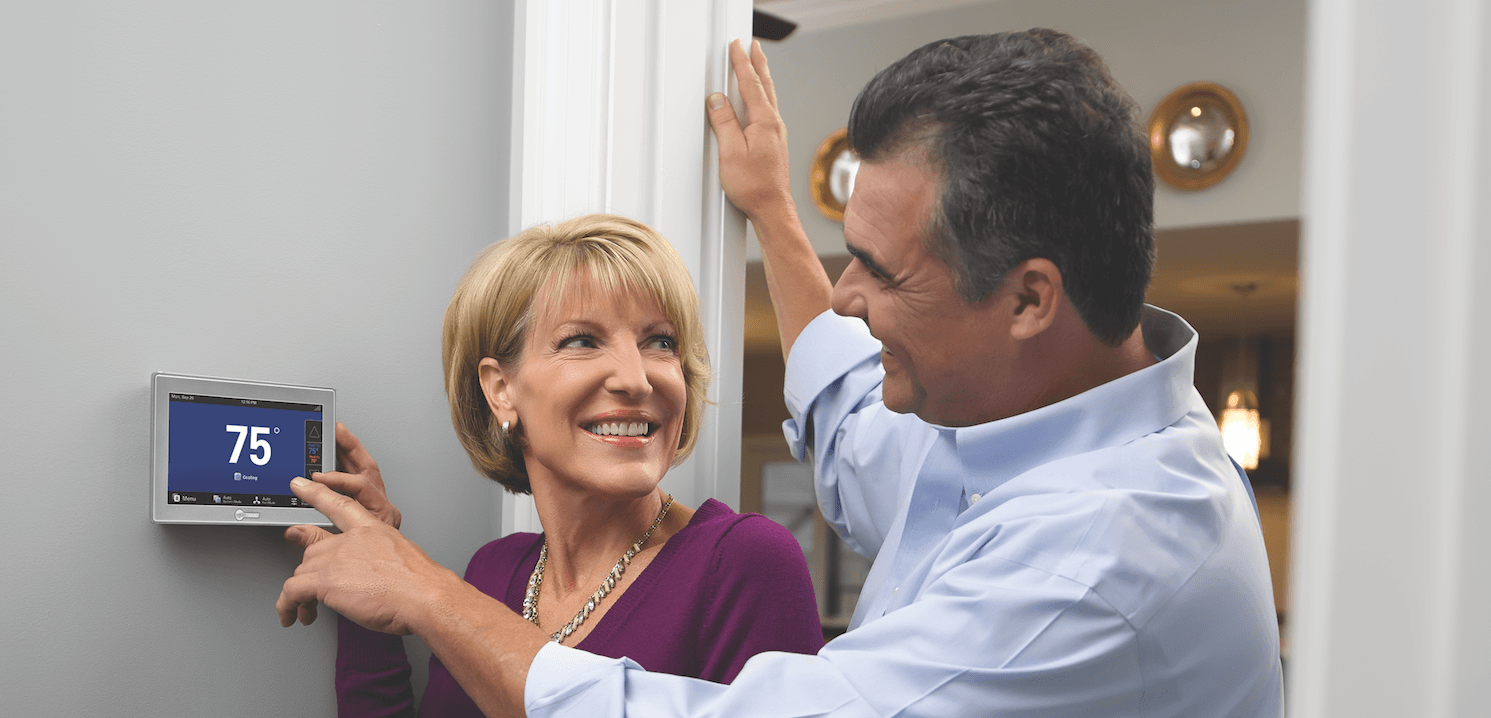AC Zoning: Is a Zoned HVAC System Right for My Home?
Learn how zoned HVAC works and how it can improve your energy savings and comfort.
Is it a never-ending battle among the people in your home over the “right“ temperature to set on the thermostat? Does it constantly feel like some rooms in your home are too hot and others are too cold? If this sounds like your household, a zoned HVAC system could be the answer to your temperature problems.
What is HVAC zoning?
An HVAC zoning system divides your home into multiple zones, each controlled by its own thermostat. This allows you to set each room to the ideal temperature for you, instead of having to heat or cool the entire home to just one temperature. A zoned HVAC system can give you more control over your comfort, provide energy savings and, perhaps most importantly, eliminate daily arguments over the thermostat!

How does an HVAC zoning system work?
The first step in setting up a residential HVAC zoning system is to actually divide your home into zones. Once your home is divided into two or more zones (more on what zones are and how to create them later), a thermostat will be installed within each. While each thermostat controls its own zone, they’re all connected to one central control panel in your home.
From there, HVAC zoning dampers, which are valves or plates that regulate airflow inside a duct, will be installed in the ducts of your home. If you’re using a multi-zone ductless cooling system instead of central air conditioning, dampers will be installed at the air outlet directly on each system. Dampers open and close. When a certain zone needs air flow, the dampers will open and allow cool or hot air to pass through. When the zone has reached the desired temperature, the dampers will close and stop air flow. Multiple dampers can be programmed to be controlled together, if they all serve the same zone in the home.
When you change the temperature on the thermostat in one zone of your home, a message is sent to the central control panel. If you raise the temperature, the central control panel will tell your heating device it’s time to go to work. If you lower the temperature, the central control panel will signal for your air conditioner to turn on. As soon as the heating or cooling device kicks on, the central control panel will open all the ducts associated with the zone requiring a temperature change, but keep the ducts of the other zones closed. This allows each zone to have its own temperature based on your needs.

How many zones do you need?
The best way to determine how many zones you need in your home is to talk to an HVAC professional. If you find that your home has vastly different temperatures upstairs and downstairs, one zone for each floor could be the right fit for you. Alternatively, you could set a zone for different sections of your home, or even a zone for each room in your home. There’s no limit on how many zones your home can have!
How to monitor and control temperatures in each zone
When it comes to a zoned HVAC system, all you need to do is control the thermostat in each zone of your home. Beyond that, let your HVAC system do the heavy lifting. Temperature control is based on your individual preferences. If you like to drop the temperature when you go to bed at night, but have your coffee in a warm kitchen in the morning, you can program your upstairs temperature to be lower than your downstairs one.
Once you change the temperature on the thermostat, your HVAC system will take care of the rest. Plus, you can change the temperature in each zone at any time, depending on when you might be feeling a little too hot or too cold. Zoning doesn’t require any extra AC maintenance, which means there’s no extra work on your part to monitor and control temperatures with zoning.
When does AC zoning make sense?
Now that you know what a zoned HVAC system is, the next step is determining if it makes sense for your home.
If you have a multi-level home
Because heat rises, it can often feel hotter upstairs than downstairs in a multi-level home. Few people enjoy sleeping when it’s hot, but it’s even worse to get out of bed when your home is freezing. If you have a multi-level home that experiences temperature fluctuations, investing in a zoned system is a troubleshooting solution that will allow you to set different temperatures for the upstairs and downstairs portions of your home, instead of attempting to control both levels with one thermostat.
If you have a home with high ceilings
If your home has tall ceilings, oftentimes heat rises and gets trapped all the way at the top, leaving you shivering at the ground level. A zoned HVAC system allows you to fix this problem by raising the room’s temperature more frequently, so heat can circulate more, making the room warmer overall. Creating a separate zone in a room with high ceilings means the temperature there can be comfortable, without making it too warm elsewhere in your home.
If your home has picture windows, bay windows or large glass windows
Sunlight can play a huge role in setting the temperature of a room. If you have any kind of large window, like picture windows, bay windows, or floor to ceiling windows, an increased amount of sunlight is likely entering the room and raising the temperature. AC zoning allows you to make rooms with many windows their own zone, so you can lower the temperature in that space without having to change the temperature in the entire house.
If rooms in your home are always at different temperatures
If none of these conditions necessarily apply to your home, but your home still seems to be a different temperature throughout each room, a zoned HVAC system might be right for you. There are hundreds of reasons why your home could have different temperatures throughout, and controlling each room with only one thermostat isn’t going to fix the problem. Investing in a zoned HVAC system will let you keep a consistent temperature throughout your home, or to change the temperature in each room to anything you desire.
Benefits of AC zoning
Increased energy savings
When you have one central thermostat controlling your entire home, every time you feel like it’s too hot or cold in just one room, you need to change the temperature in your entire home. Heating and cooling your entire home requires more energy and time (even if you’ve invested in highly rated SEER products), which can mean a bigger energy bill for you.
With a zoned HVAC system, if you want to change the temperature in just one room or floor, you can do that. The system won’t release heated or cooled air anywhere but that one zone, which means it’s using less energy and saving you money.
Extra control and comfort in your home
Multiple thermostats means more control of the temperature and your overall comfort in your home. An HVAC zoning system makes each room the ideal temperature based on your individual preferences, so you don’t have to settle for just one temperature throughout your home. If there’s multiple people living in one home, zoned HVAC will even let each person control the temperature in their own bedroom or living space, so everyone is satisfied.
Better air quality
While the air flowing through an HVAC system is filtered, sometimes particles like lint, dust, pollen, or pet dander can escape through the filters and back into your home. The HVAC zoning dampers that control a zoned HVAC system make sure air is only diverted to the zone it’s intended for. This helps keep unwanted dirt and debris that escaped the filtration system from circulating throughout the entire house every time the HVAC system is turned on.
How much does an HVAC zoning system cost?
If you think HVAC zoning could be the right fit for your home, you’re probably curious about HVAC pricing for this system. The initial cost of zoning equipment and installation for a zoned HVAC system runs between $1,700 and $4,500, according to HomeGuide. But this doesn’t include any costs associated with replacing existing HVAC components.
The initial cost also depends on the number of zones you’re looking to install. If you want to overhaul an existing HVAC system with a zoned one, the cost will increase so the technician can remove your old system or upgrade it with dampers and new electric wiring. Installing a zoned HVAC system during new construction is typically a more inexpensive option.
Potential cost savings from an HVAC zoning system
Keep in mind that the cost of installing an HVAC zoning system or doing an HVAC zoning retrofit may be offset by cost savings on your energy bill. According to the U.S. Department of energy, HVAC zoning could lead to a 30% reduction in energy costs. This is because your temperature adjustments are targeted to specific rooms or zones and not the entire house. In fact, because you aren’t heating or cooling the entire house at once, you may also see a reduction in HVAC system maintenance costs.
Is AC zoning right for you?
While a zoned HVAC system can provide many benefits, it isn’t for everyone. HVAC zoning typically carries a higher installation cost because it’s more work for an HVAC professional than a traditional central heating or cooling device. This type of system requires multiple thermostats, which come with increased electrical work and cost, as well as installation of dampers in every zone. Plus, when there’s more pieces involved in an HVAC system, there’s more potential for one of them to break down, which means increased repair costs.
If you don’t feel like your home is constantly at different temperatures, or don’t have any of the in-home features we mentioned earlier (i.e., large windows), a zoned HVAC system might not be for you. Here’s how various air conditioning systems work without zoning:
- Central air conditioning: Central air conditioning: A central air conditioner provides cool air to your entire home via a system of ducts. If you’re happy with your entire home being the same temperature all the time, a central air conditioning system will keep you cool throughout the spring and summer months. Central air conditioning is typically paired with a heating device like a furnace or heat pump.
- Heat pump: Heat pumps can both heat and cool your home, but work best paired with an air handler or furnace. Heat pumps are great in mild to hot climates, so if you live in a place with consistently warm or hot weather conditions, a heat pump could be perfect for your home. This HVAC combination also works by feeding warm or cool air through a system of ducts to make your entire home one consistent temperature.
- Ductless systems: Ductless air conditioners don’t use zones or ductwork to circulate and control air. Instead, they pump cool or warm air directly into one singular room. Ductless systems are great for people who want to control the temperature in just one singular room, instead of their entire home.
Is zoned HVAC the right fit for your home? Schedule an appointment.
Contact a dealer
From finding the right HVAC system to maintaining it, a dealer is your best resource.
Get your questions answered every step of the way.




